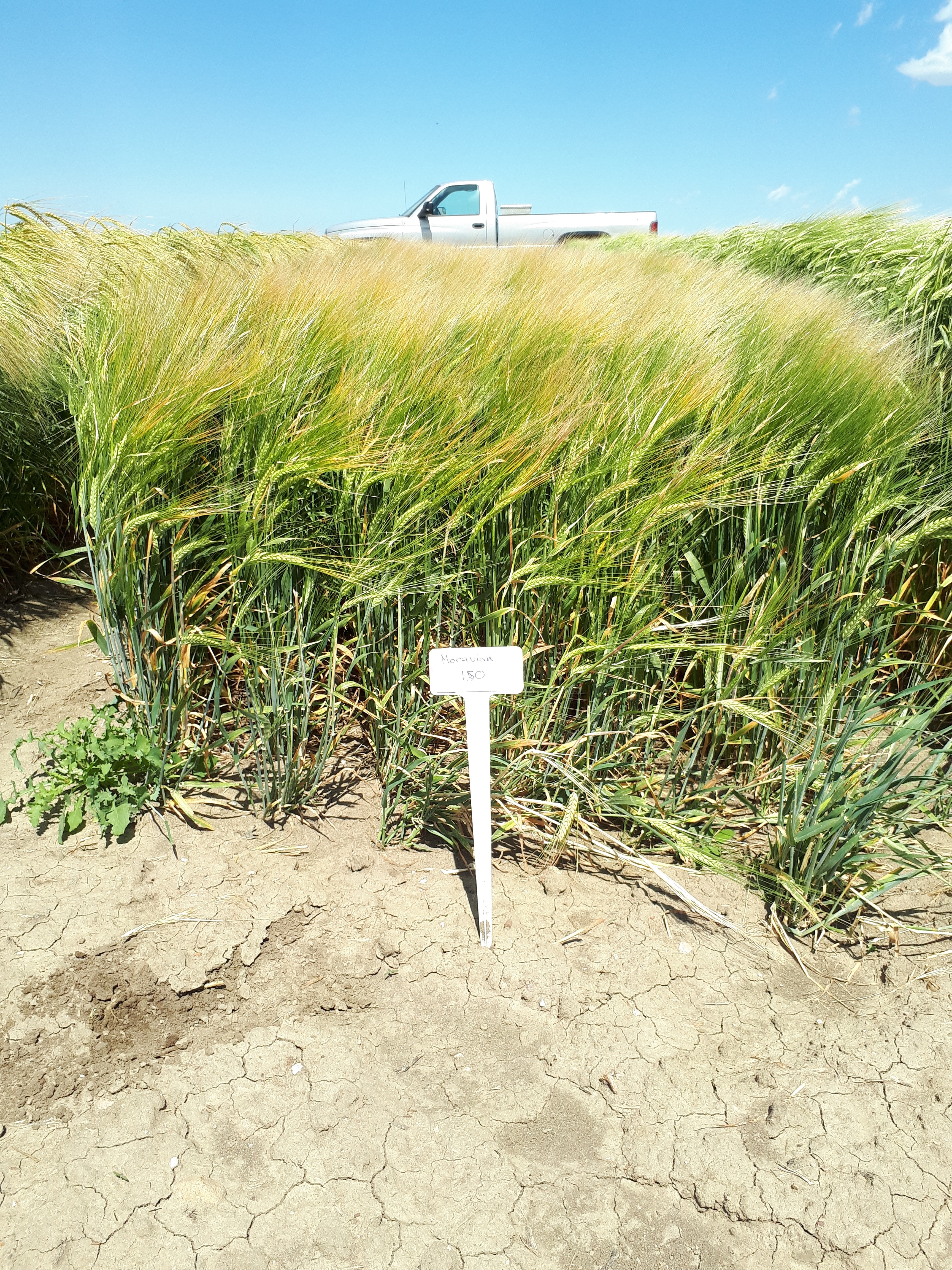Bill Coors 100
| Denomination: | 'Bill Coors 100' |
|---|---|
| Previously Proposed Denomination: | 'Moravian 150' |
| Botanical Name: | Hordeum vulgare |
| Applicant/Holder: |
MillerCoors LLC 250 S. Wacker Drive Suite 800 Chicago, Illinois 60606 United States of America |
| Breeder: |
MillerCoors LLC, Chicago, United States of America |
| Agent in Canada: |
Parlee McLaws LLP 1700 Enbridge Centre, 10175-101 Street NW Edmonton, Alberta T5J 0H3 Canada Tel: 780-423-8565 |
| Application Date: | 2017-09-05 |
| Provisional Protection:: | 2017-09-05 |
| Application Number: | 17-9287 |
| Grant of Rights Date: | 2021-05-11 |
| Certificate Number: | 6418 |
| Exemption from compulsory licensing: | Yes |
| Expiry date for exemption from compulsory licensing: | 2023-05-11 |
| Grant of Rights Termination Date: | 2041-05-11 |
Variety Description
Varieties used for comparison: 'CDC Copeland' and 'AAC Synergy'
Summary: At tillering, the plants of 'Bill Coors 100' have a semi-erect to intermediate growth habit whereas the plants of 'CDC Copeland' are intermediate to semi-prostrate and the plants of 'AAC Synergy' are erect to semi-erect. On the lower leaves, the leaf sheath of 'Bill Coors 100' has sparse pubescence whereas 'CDC Copeland' has dense pubescence. The auricles on the flag leaf of 'Bill Coors 100' have a medium intensity of anthocyanin colouration whereas the auricles on the flag leaf of 'CDC Copeland' have a strong intensity of anthocyanin colouration. The flag leaf of 'Bill Coors 100' is shorter than the flag leaf of both reference varieties. Spike emergence occurs late in the season for 'Bill Coors 100' while it is early to mid-season for 'AAC Synergy'. At the beginning of ripening, the plants of 'Bill Coors 100' are shorter than the plants of both reference varieties. The lemma awn tips of 'Bill Coors 100' have a medium intensity of anthocyanin colouration whereas those of 'AAC Synergy' have a weak intensity of anthocyanin colouration.
Description:
YOUNG PLANT: semi-erect to intermediate growth habit at tillering, sparse pubescence on lower leaf sheaths
PLANT: two row, spring malting type, low to medium frequency of plants with recurved flag leaves, late spike emergence
FLAG LEAF (AT BOOTING): medium to dense pubescence on blade
FLAG LEAF SHEATH: medium to strong glaucosity, sparse pubescence
AURICLES: medium intensity of anthocyanin colouration, sparse pubescence on margins
SPIKE: absent or very weak glaucosity, semi-erect attitude, platform shaped collar, parallel shape, dense, parallel to weakly divergent attitude of sterile spikelet, glume and awn of the median spikelet are equal to length of grain
LEMMA AWNS: medium intensity of anthocyanin colouration of tips, longer than length of spike, rough spiculation on margins
FIRST SEGMENT OF RACHIS: medium length, weak curvature
KERNEL: whitish aleurone layer, long rachilla hairs, husk present, absent or very weak to weak anthocyanin colouration of nerves of lemma, absent or very weak spiculation of inner lateral nerves of dorsal side of lemma, hairiness of ventral furrow present, clasping disposition of lodicules, medium length, narrow to medium width
AGRONOMIC CHARACTERISTICS: fair to good resistance to lodging and shattering, fair tolerance to straw breakage
Origin & Breeding History: 'Bill Coors 100' (experimental designation Pop08-150-031) originated from the cross between 'Moravian 119' and 'CDC Kendall' made in January 2008 in Burley, Idaho. The F1 progeny was backcrossed to 'Moravian 119' and the resulting progeny were selfed through to the F3 generation in a greenhouse in Burly, Idaho in 2008 and 2009 using a single seed-descent method. F4 plants were grown in field as inbred lines. Subsequent seed increases and plant selections occurred in an off-season nursery in New Zealand and in the USA, Montana and Idaho, through to the F13 generation. Agronomic and malting characteristics used as selection criteria included yield, kernel plumpness, test weight, protein, moisture, plant height, lodging, maturity, extract fine ground dry basis, viscosity, beta-glucan content, free amino nitrogen, alpha amylase, diastatic power, and acidity.
Tests & Trials: The comparative trial for 'Bill Coors 100' was conducted in Taber, Alberta during the 2019 growing season. The trial was arranged in a RCB design with 2 replicates. Plots consisted of 6 rows 12.5 metres in length and a row spacing of 20 cm. Measured characteristics were based on a minimum of 20 measurements. Mean differences were significant at the 5% probability level based on unpaired Student's T-tests. Results were supported by the official technical examination report 201700103, purchased from the Plant Variety Protection Office in Washington, District of Columbia, USA.
Comparison tables for 'Bill Coors 100' with reference varieties 'CDC Copeland' and 'AAC Synergy'
Flag leaf length (cm)
| 'Bill Coors 100' | 'CDC Copeland' | 'AAC Synergy' | |
|---|---|---|---|
| mean | 9.2 | 12.1 | 11.1 |
| std. deviation | 2.00 | 2.20 | 2.50 |
Plant height (stem plus spike, including awns) (cm)
| 'Bill Coors 100' | 'CDC Copeland' | 'AAC Synergy' | |
|---|---|---|---|
| mean | 77 | 106 | 100 |
| std. deviation | 2.7 | 4.4 | 4.2 |
Click on image for larger view

Barley: 'Bill Coors 100'
Click on image for larger view

Barley: 'Bill Coors 100'
- Date modified: